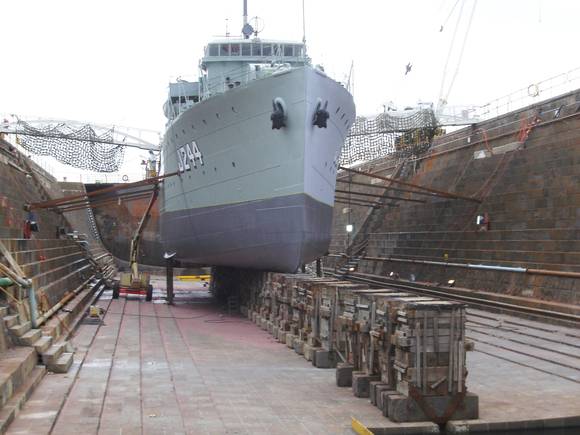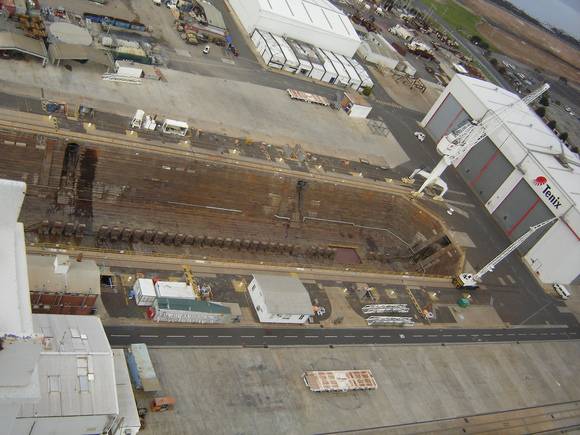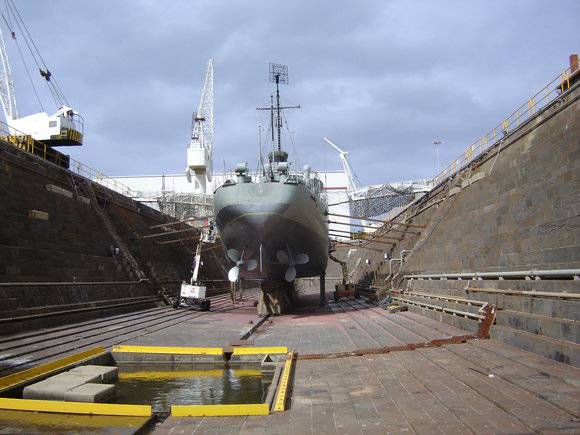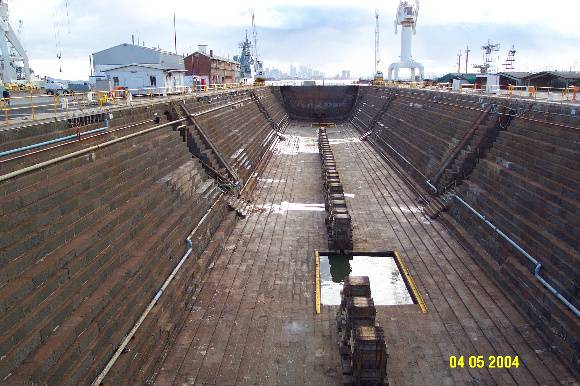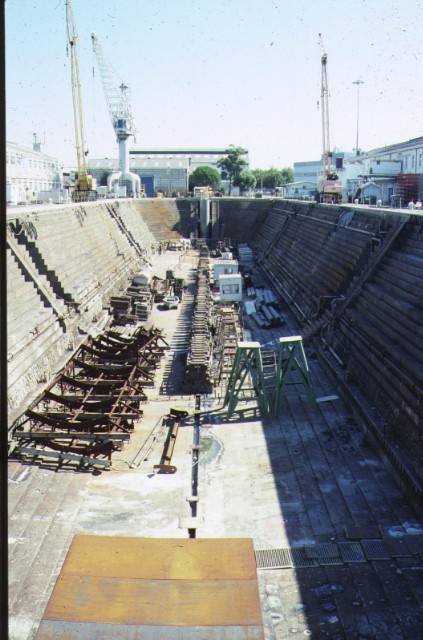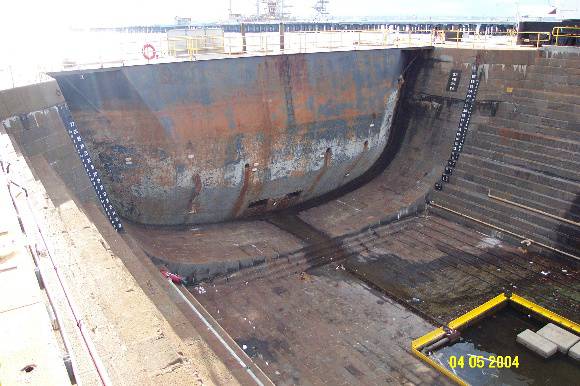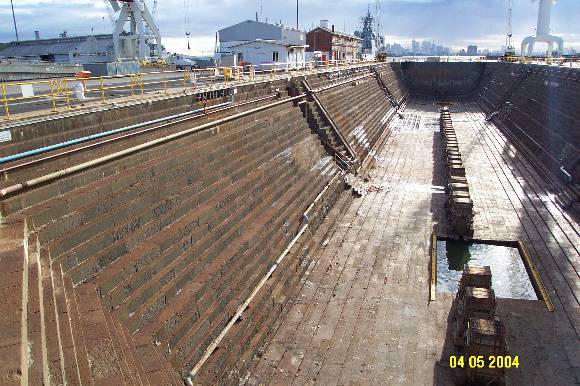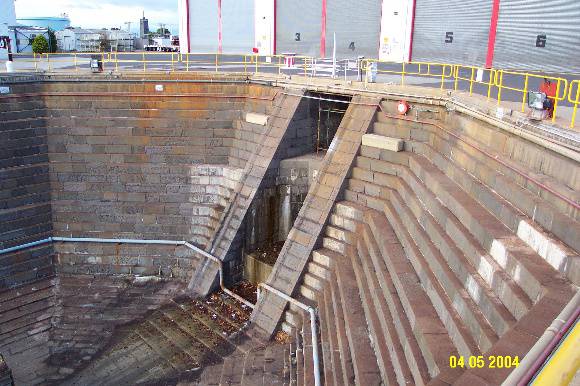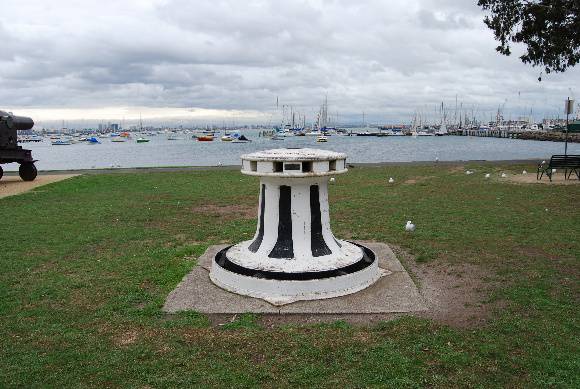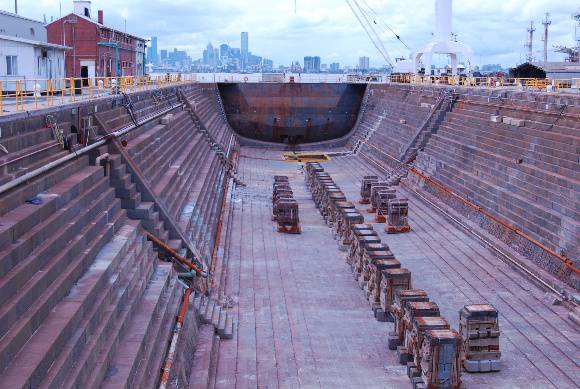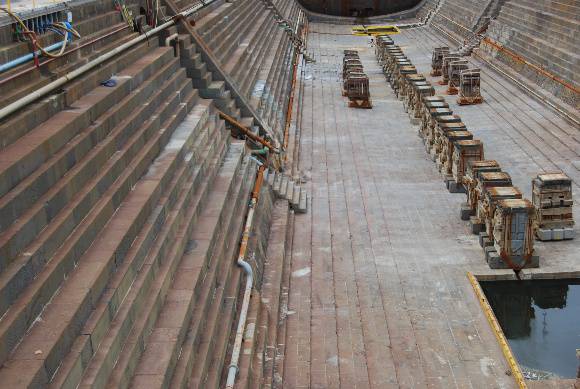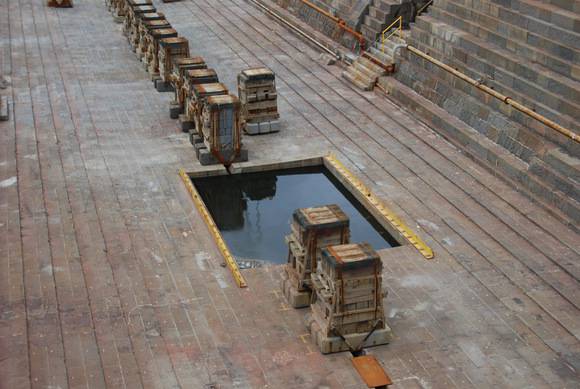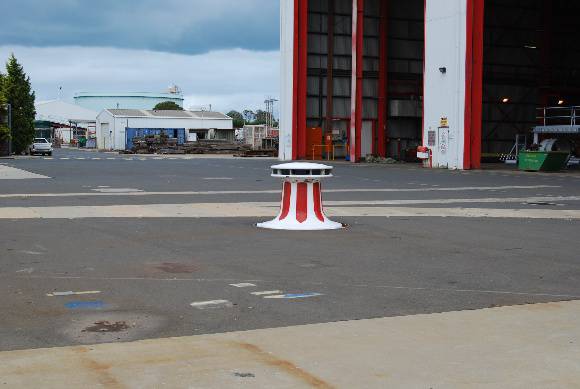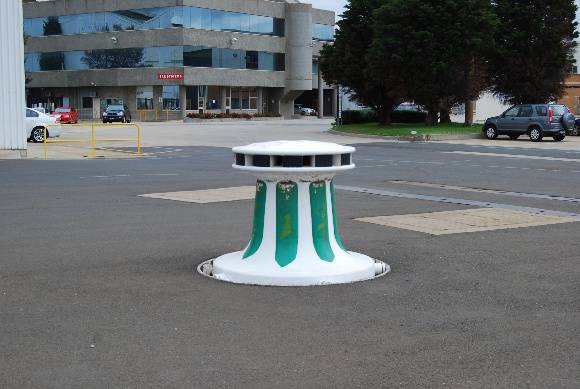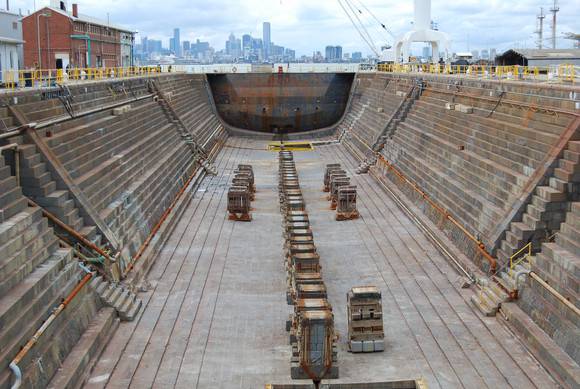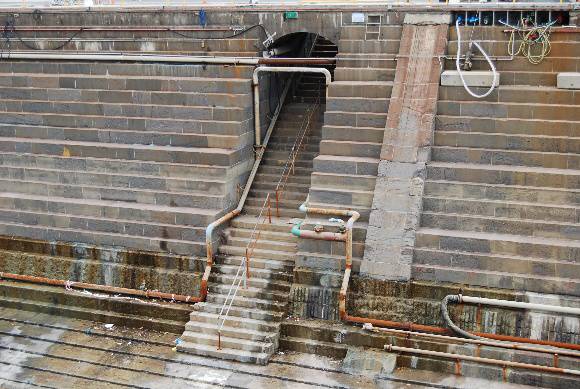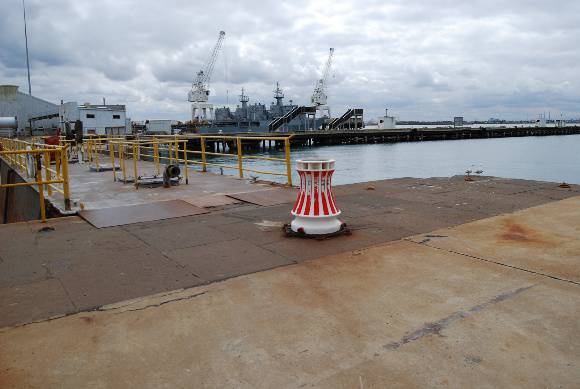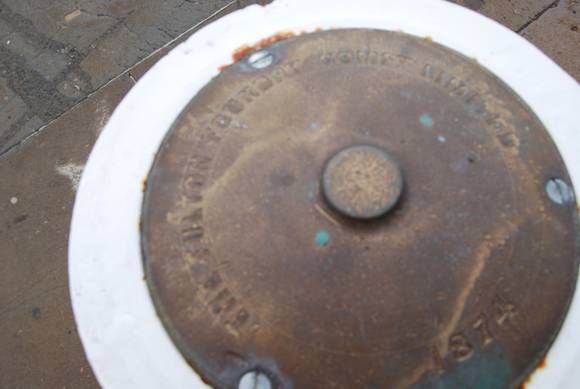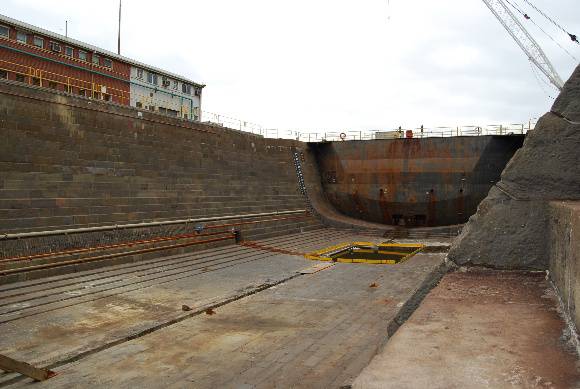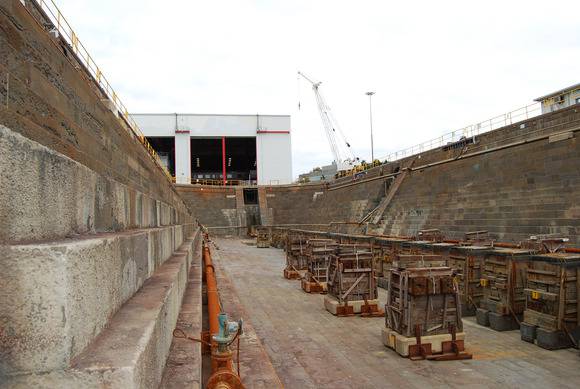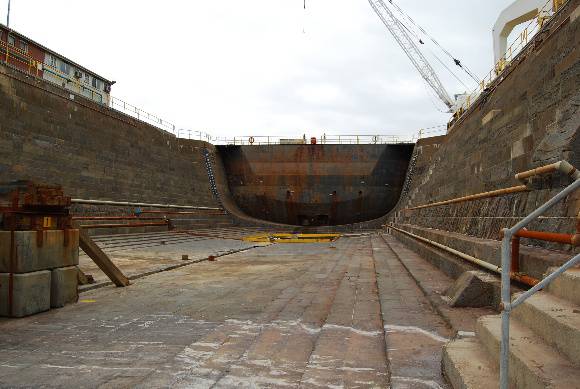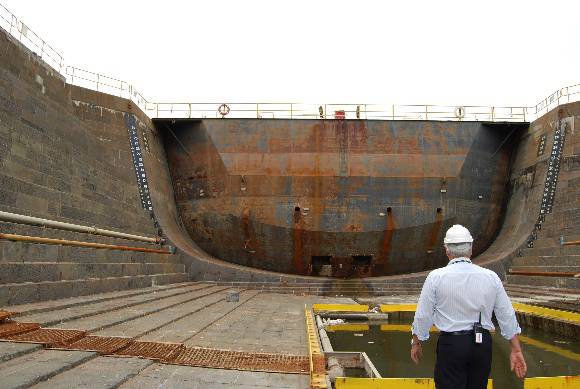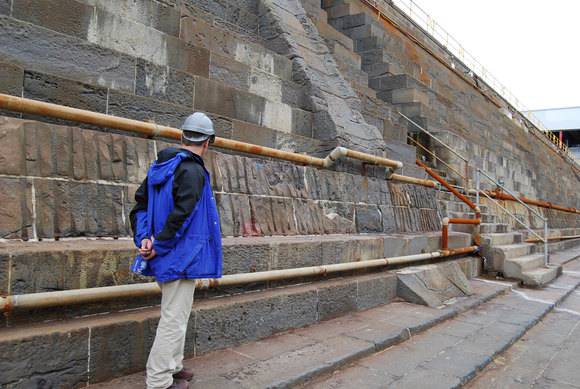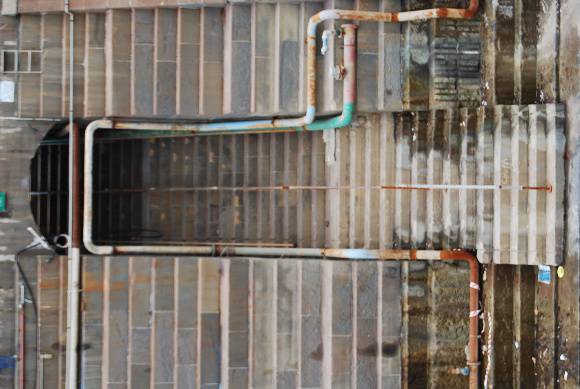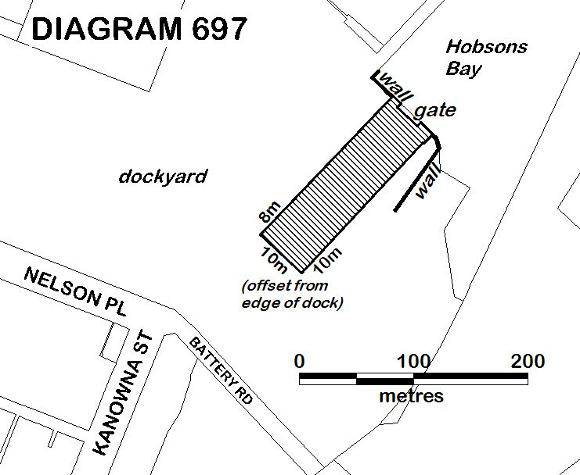| Back to search results » | Back to search page » |
|
ALFRED GRAVING DOCK
Statement of Significance
What is significant?
The Alfred Graving Dock in the Williamstown Dockyard.
History Summary
The Alfred Graving Dock was constructed by contractors for the
Victorian Government between 1864 and 1873 at a total cost exceeding
£300,000. It was the largest works undertaken by the Victorian
government at that time and was of international importance both as a
facility for shipping and as a work of engineering. In 1913 the dock
was incorporated into a new dockyard owned by the Victorian Government
and known as the State Shipbuilding Yard. In 1918 the Commonwealth
Government purchased the site and in 1924 the Melbourne Harbor Trust
(MHT) purchased the dockyard. After the outbreak of World War II the
MHT used the dockyards for the conversion of merchant vessels and
trawlers for war purposes and the construction of naval vessels. The
Royal Australian Navy requisitioned the dockyard in 1942. The dockyard
was sold to a private company in 1988 and in 2009 was owned by BAE
systems. Although major alterations have been made to the wider
dockyard area, the Alfred Graving Dock remains substantially intact.
It has been in continual use for ship repair since 1874.
Description Summary
The Alfred Graving Dock is an excavated pit, approximately 126 metres
in length and 30 metres wide. The pit is lined with closely
interlocking basalt blocks, with most blocks generally measuring a
metre cubed. It is built in the form of an inverted arch. A floating
caisson or dock gate is located at the seaward end of the dock. There
are capstans at the land (2) and seaward (2) end of the Dock. In 1987,
188 basalt blocks ranging in size from 50x30x70cm to 200x30x70cm were
removed from the base of the dock and mortared together to form a
patio at the north of Nelson Place. Two large iron plates in the dock
indicate their original location. The Alfred Graving Dock is located
within an extensive dockyard complex on Nelson Place, Williamstown. This site is part of the traditional land of the Yalukit Wilum
people.
How is it significant?
The Alfred Graving Dock is of architectural and historical
significance to the State of Victoria. It satisfies the following
criterion for inclusion in the Victorian Heritage Register:
Criterion A
Importance to the course, or pattern, of Victoria's cultural history.
Criterion F
Importance in demonstrating a high degree of creative or technical
achievement at a particular period.
Criterion H
Special association with the life or works of a person, or group of
persons, of importance in Victoria's history.
Why is it significant?
The Alfred Graving Dock significant at the State level for the
following reasons: The Alfred Graving Dock is historically significant as one of the
greatest public works constructed in Australia in the nineteenth
century and as an expression of the technical skill of Victorian
architects, engineers and stonemasons. It provided an essential
shipbuilding and repair facility in colonial Victoria when the colony
was almost entirely reliant on maritime transport for economic
development and population growth. It was an installation vital to the
defence of Victoria in the late nineteenth century and early twentieth
century and important to the naval defence of Australia in the
twentieth century. As a key component of the Williamstown dockyard, it
has made a vital economic and social contribution to a working-class
community employed principally in maritime related activity.
[Criterion A & F] The Alfred Graving Dock is architecturally significant as an example
of the work of the distinguished architect and Victoria's
Inspector-General of Public Works from 1861 to 1878, William Wilkinson
Wardell. Wardell also designed Government House, St Patrick's
Cathedral, and the Gothic ANZ Bank on the corner of Collins and Queen
Streets. [Criterion H]
Group
Transport - Water
Category
Dock/Dry dock/Graving dock


